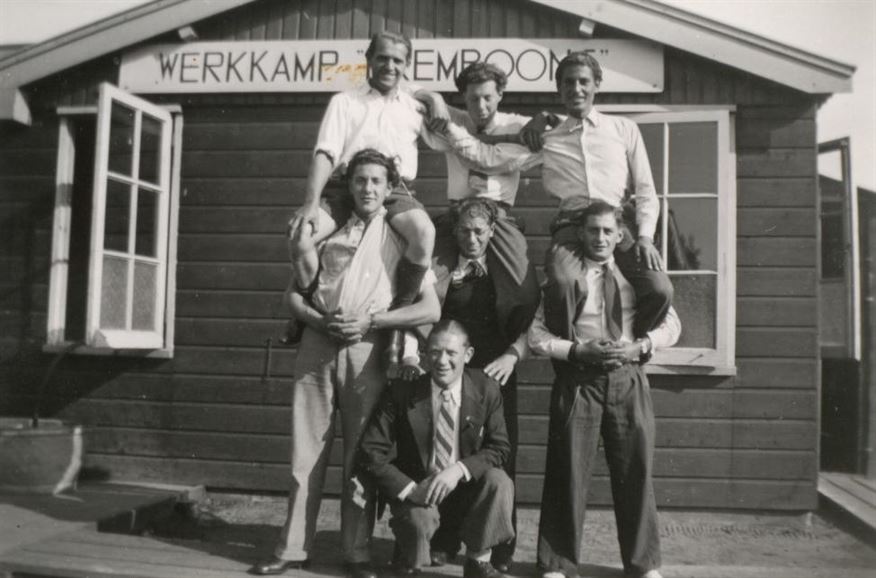Military Camp
In 1949, the Ministry of War temporarily took over Camp Westerbork. The police actions in the former Dutch East Indies were in full swing, and as a result, there was a major shortage of military encampments in the Netherlands. Westerbork became a training camp for soldiers who were to leave for the Dutch East Indies. They were prepared in six weeks, for things like war in the tropics. In addition to watching instruction videos, the training consisted of drills and other military exercises.
Jan Giesekam, soldier of the Royal Dutch Brigade Princess Irene (Koninklijke Nederlandse Brigade Prinses Irene), was camped in Camp Westerbork in those days. ‘In a darkened barrack, it was explained to us how you should execute a bayonet attack and how to take one. Next, we practiced it out on the heather. Army crawl and different types of sieges, for instance.’
The soldiers were housed in the former residential barracks in Camp Westerbork. Every platoon of thirty soldiers had one barrack at his disposal. Here, they had to eat, live, and sleep – on blue-and-white chequered bags filled with straw and under a horse blanket.
In September 1949, the Military Camp Westerbork was abolished.





